Text
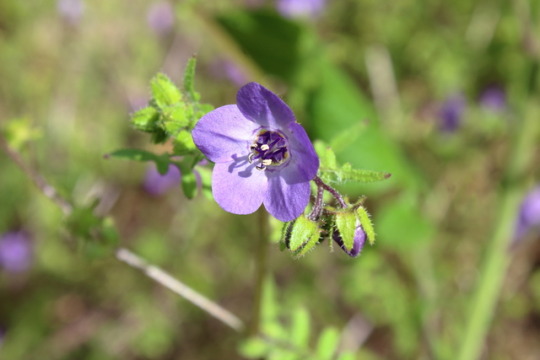
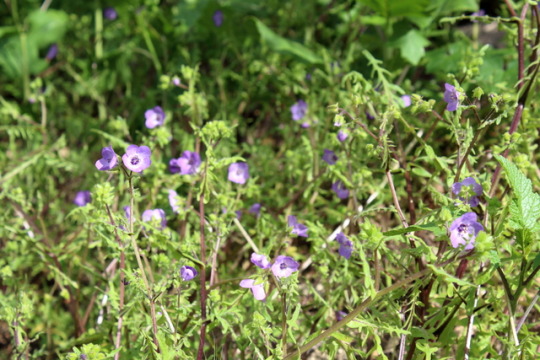
Let's take a look at some Fiesta Flower (Pholistòma aurìtum).
Found in the Waterleaf Family (Hydrophyllaceae) this native annual is a common fire follower and blooms from March through May on shaded slopes in Chaparral and Oak Woodland.
Fun fact: P. aurìtum have small prickles on their stems and it is said that señoritas long ago would decorate their ball gowns with them because they would cling onto delicate fabrics.
Note how P. aurìtum petals sparkle in the sun. Zoom in to see how lovely it is!
References:
Dale, N. (2000). Flowering plants of the Santa Monica Mountains: Coastal and chaparral regions of Southern California. Sacramento: California Native Plant Society.
McAuley, M., & Kenney, J. P. (1985). Wildflowers of the Santa Monica mountains. Canoga Park, CA: Canyon Pub.
1 note
·
View note
Text
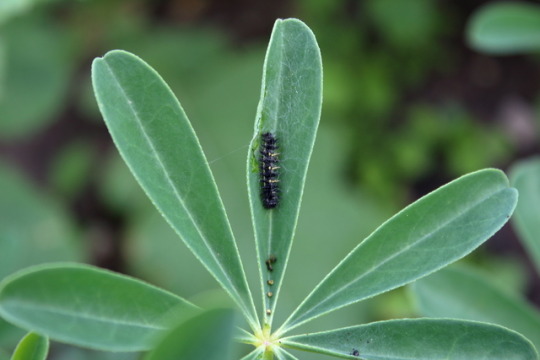
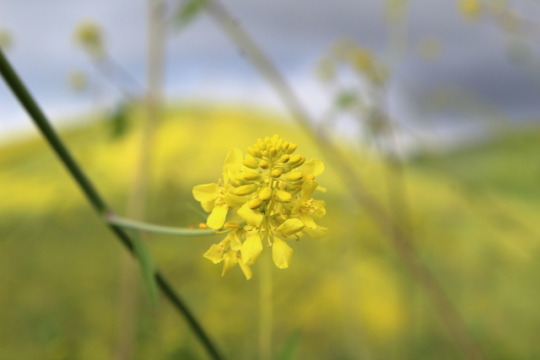
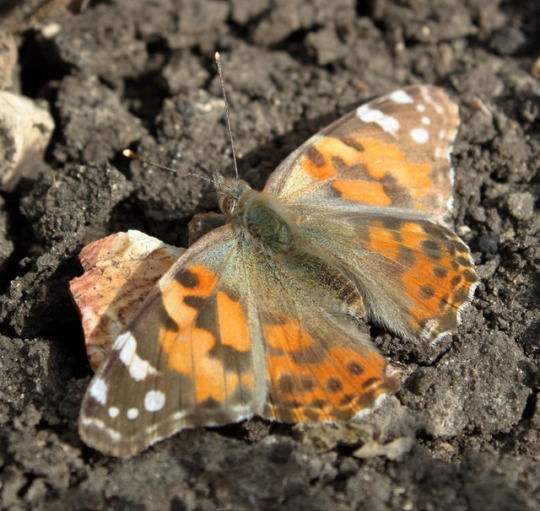
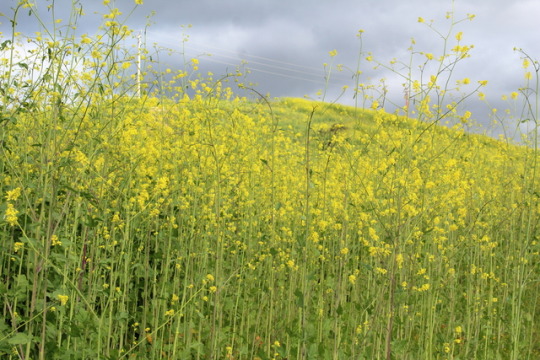
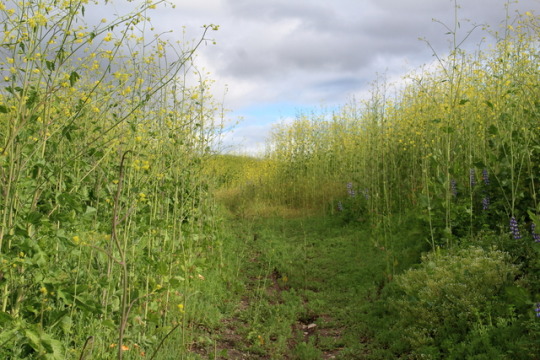
Our native California Painted Lady has had quite the migration this year! The estimates number close to a billion flying at 25 miles an hour from the deserts of California to the Pacific Northwest. Regardless of their deemed host plants, I have personally witnessed these hungry butterflies enjoying the yellow Mustard, which grew over 8 feet from plenty of rain this season, as well as their larvae munching on the Foothill Lupine. The caterpillars even weave silk nests to protect themselves against predators. Many Painted Lady's are still around enjoying the abundance with 2019s California Superbloom and foregoing their comrade's determined trek North for now.
It was so enjoyable driving around during the height of the migration last month and seeing everyone's faces light up with smiles, laughes, and dumbfounded wonder in awe of this spectacle. Then it turned rather hilariously dark while people watching. Quickly everyone's shared enjoyment turn to horror when they inevitably realized they were hitting some of these precious creatures and there was nothing they could do while navigating around town.
My sister had been visiting this week and along with my kids we were driving through Malibu, Ca exclaiming, "Awe the butterflies! This is amazing!! They're freaking everywhere!" to shrieking, "Ahhhhhh butterflies, noooo! It's a butterfly massacre! This is horrible!" We will never forget this.
11 notes
·
View notes
Text

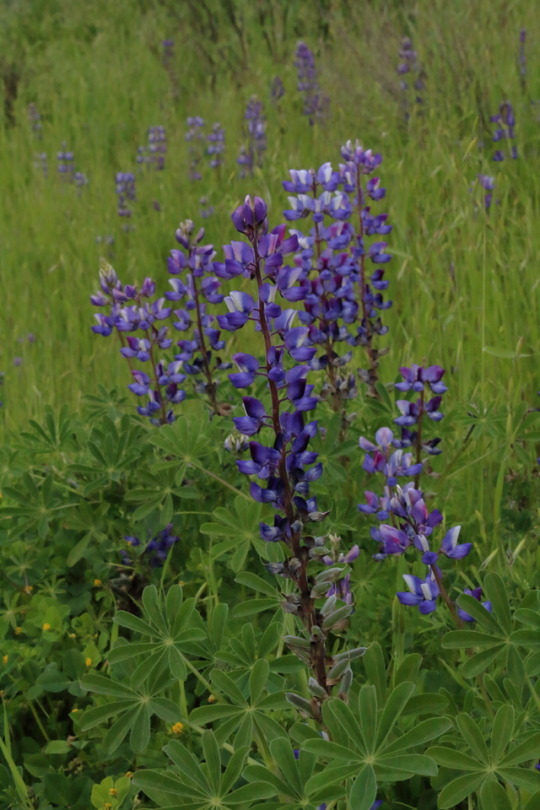
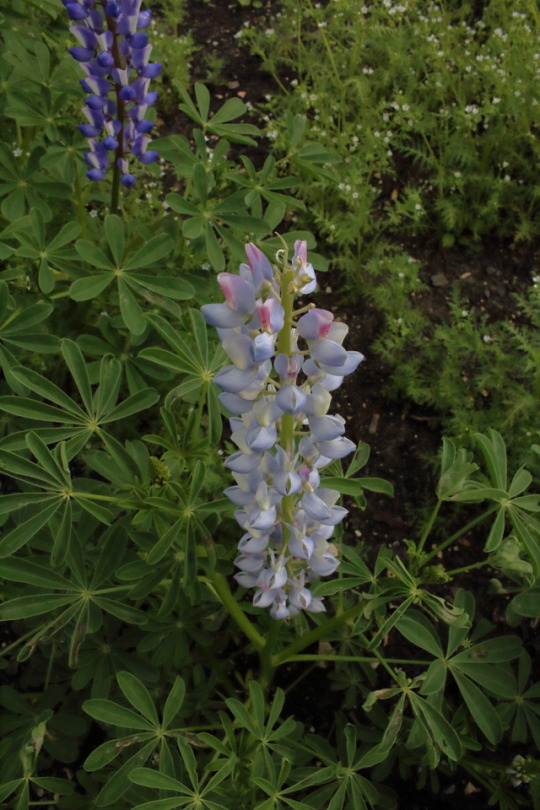
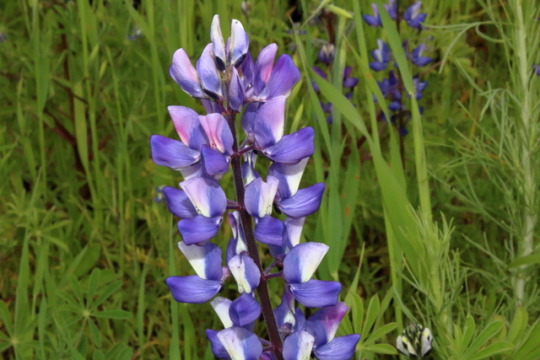
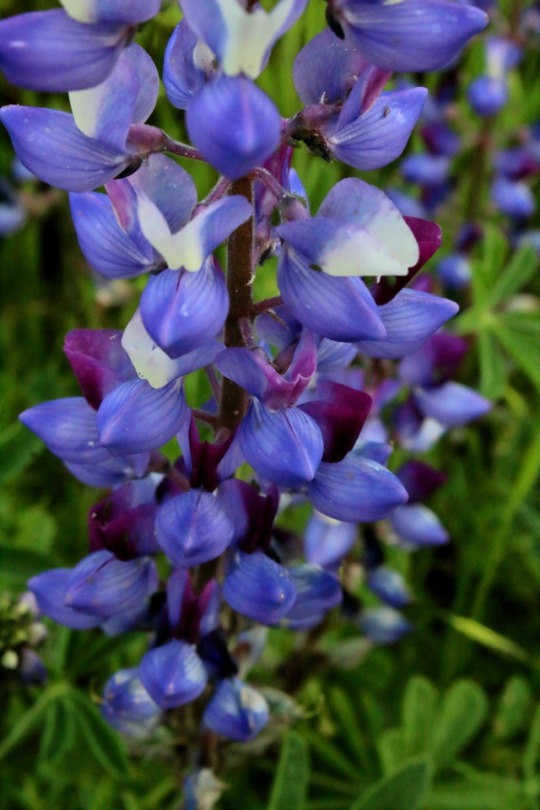
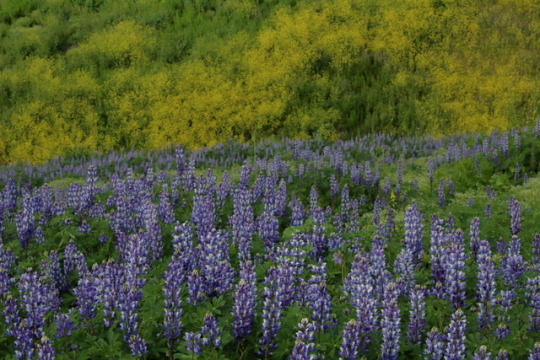
Let's take a look at some Foothill Lupine (Lupìnus succuléntus).
Found in the Pea Family (Fabaceae) this annual herb is a dominant fire follower and blooms from February through May on Grassy slopes and in Coastal Sage Scrub.
Fun fact: L. succuléntus enjoys blooming below 1500 feet on eastern facing slopes for the early sun. Succuléntus means "thick, fleshy, and juicy."
Note the very pale mutation observed in a recent burn scar.
References:
Dale, N. (2000). Flowering plants of the Santa Monica Mountains: Coastal and chaparral regions of Southern California. Sacramento: California Native Plant Society.
McAuley, M., & Kenney, J. P. (1985). Wildflowers of the Santa Monica mountains. Canoga Park, CA: Canyon Pub.
20 notes
·
View notes
Text
#TOStrong

On November 8, 2018, while other fires raged across California, and my community was reeling from a mass shooting the day before, a new threat loomed that would leave us all unable to properly mourn the loss of a friend and process all the casualties suffered at Borderline.
As we gathered at the vigil for the lives wasted in gunfire, we were unaware that in mere hours we'd have to gather our strength yet again and switch gears, some of us awakening in the middle of the night with minutes to pack our treasures and evacuate.
The Woolsey fire was coming.
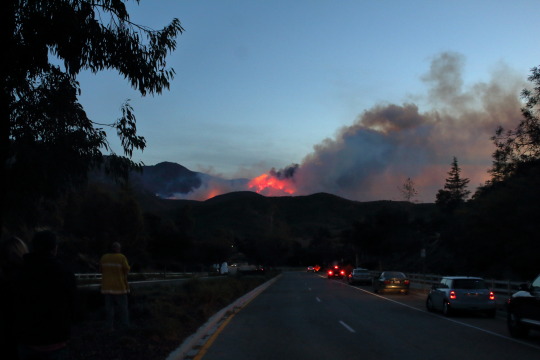
Over 96,000 acres, spanning two counties, ignited with 295,000 people under mandatory evacuation. Over 1600 structures burned displacing people, farm animals, pets large and small, wildlife, and killing three people. Embers flew on gusts upwards of 60 miles an hour, jumping a freeway, racing through rugged terrain, up mountains, and down canyons of dried Chaparral and Scrub Brush— miles of ripe kindling which cannot ever be cleared or the mountains come down in deadly mudslides during the rainy season.
This is my community's natural disaster. Some have tornadoes, ice storms, floods, volcanoes, or hurricanes. We have fires followed by mudslides as our yearly natural disaster throughout our large state. This was the third experience to directly impact my family, so about once every ten years. "Why don't you move?" I hear some people say from afar. Then there was the online hate directed at this community I love. Name me a perfect place without natural disasters. There are none.
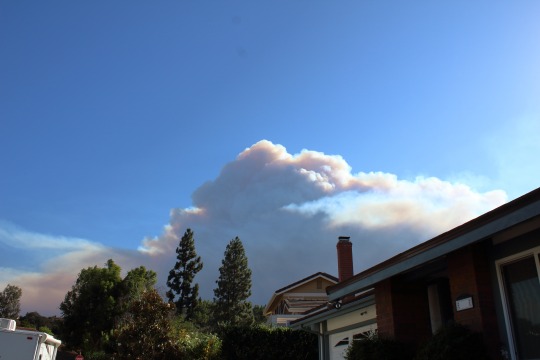
The wind changed direction, forcing us to evacuate in the middle of the night as we scrambled to pack our trunk. In the space of minutes, what would you grab? A tote of important documents I created for such emergencies: passports, social security cards, birth certificates, etc. Then wedding albums and framed pictures of my children when they were babies. The rest of my hatchback was stuffed with my kid’s lovies: ones they’d carefully chosen knowing we couldn’t save every stuffed animal. Then our pillows and sleeping bags for the evac-center cots, if any were available. Everything else: clothes, books, toys, toiletries, dishes etc. are replaceable and of little importance in a split second emergency.
We piled our two kids, two cats, and a big dog into our small hatchback and drove off into the night uncertain of when we could return.

In the middle of all this I called my sister who hadn't heard the evacuation warnings that the fire was upon her doorstep. She had just gone to bed. "Where are you?!" I said. "Home." All I remember was crying for her to leave immediately. "Get out now! Go!! Go!!" She drove by towering flames as structures around her turned to ash.
We were the lucky ones. We still had homes to come back to. Our biggest concern was poor air quality for weeks ahead; wearing our N95 masks and sadly knowing you’re smelling and breathing the ashes of other people’s loss. I can say with 100% certainty that our firemen and women are the nation's best; they get a lot of practice and work tirelessly for weeks, with little rest, putting their lives at risk.
Thank you CalFire.
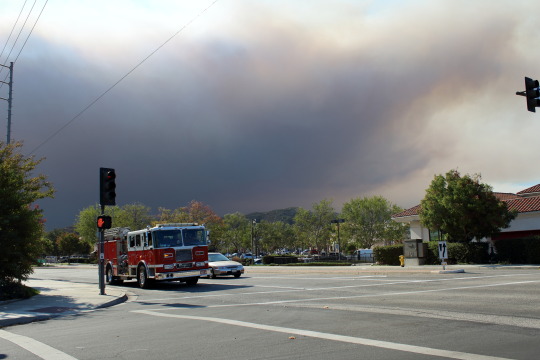
Our community is strong and we pulled together to support those in need, even as our president leveled the blame at "poor forest management" despite there being no forest here, and as I’ve said many times there is no budget large enough to clear the very difficult and vast terrain, nor should that be a thought lest the mountains will bury you in your sleep from a lack of roots to hold the dirt in place.

The following images show the burn scar rebirth where the Woolsey fire stormed right into the heart of Thousand Oaks, Ca, across from our Civic Center's vigil for the victims of the Borderline shooting, in which we mourned the loss of our friend and others; young souls gone way too soon. These photos are consistent with the first image heading this post. The rebirth happened in 4 months time with our heavy rains. With all this horror it is a reminder of brighter days ahead, positive thinking, and to try to look for the good. There is always good to be found.

It is very hard to tell, but this maybe the skeleton of a Laurel Sumac.
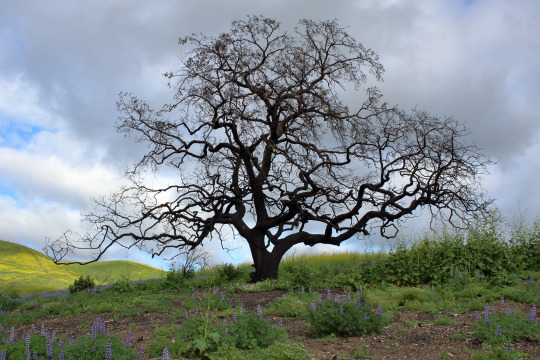
A charred black Coast Live Oak tree that easily existed before WWI. I estimate it is near 18 meters tall and 26 meters wide after standing next to it. These are very slow growing which makes this specimen quite old.
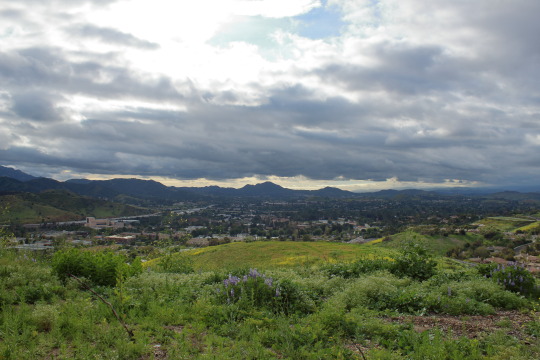
The Civic Center is the large tan building to the left. Down from this hill is where the home from the first picture was located.
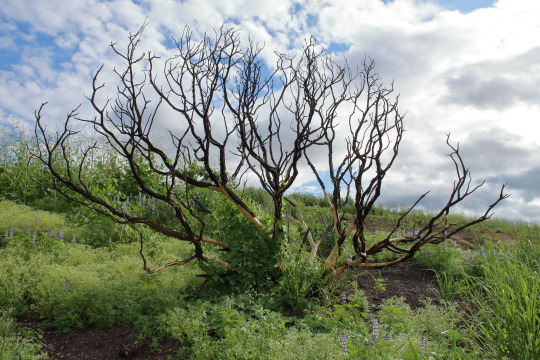
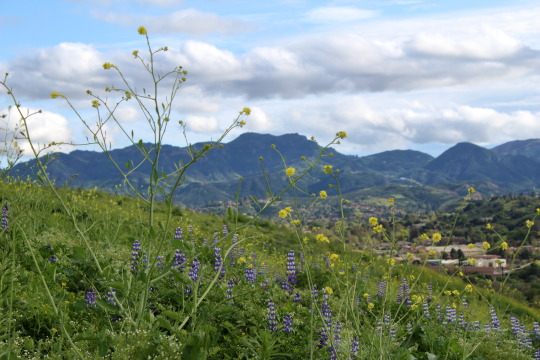
All these mountains burned, as you can see, some are still quite black on various peaks. They are apart of the Santa Monica Mountain range and descend into Malibu, which was tragically hit so hard by the Woolsey fire.

Chaparral over grows. It dries, it dies, it builds up and chokes out the beauty, but beauty lies in wait for the fire that burns out invasive species, parasitic vines, and choking poison oak. And with this fire that nurtures the soil, after such darkness and despair, a change in season.
Now these patient seeds take root, grow strong, and bloom in all their beautiful glory, witnessed by all. This cycle goes on. I use it as a metaphor for our own pain within us and trials I experience; that I can burn them out and reveal inner beauty once again. This mantra is found in the rebirth and the reason I document it. It's my meditation and it helps me cope and to know it will all be OK.
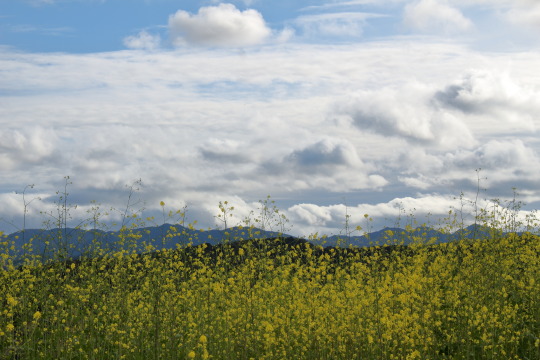
26 notes
·
View notes
Text
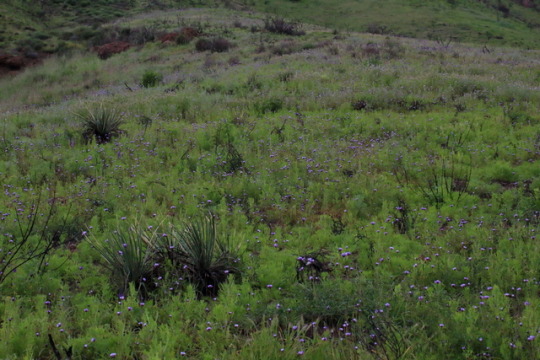

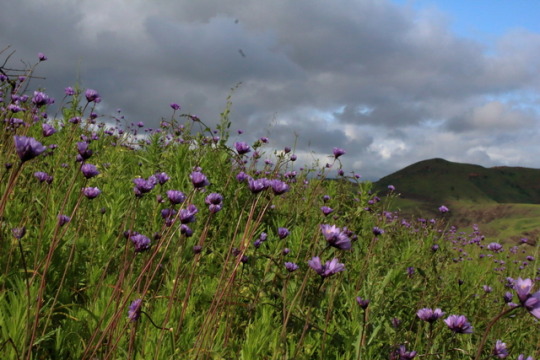

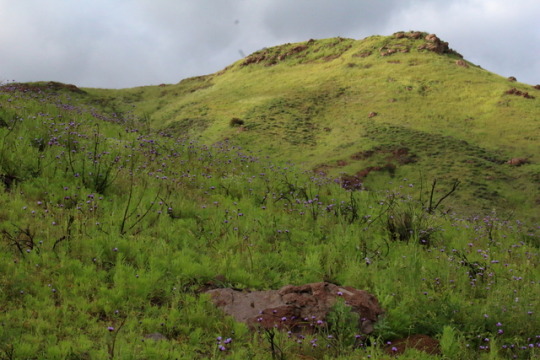
Let's take a look at Wild Hyacinth (Dichelostemma capitatum).
Found in the Amaryllis Family (Amaryllidaceae) this common perennial herb is enjoyed by Tiger Swallowtail butterflies and is found blooming in Costal Sage and Grasslands from February through May.
Fun fact: Native Americans and early settlers used to eat the tasty little corms referring to these as grass nuts.
References:
Dale, N. (2000). Flowering plants of the Santa Monica Mountains: Coastal and chaparral regions of Southern California. Sacramento: California Native Plant Society.
McAuley, M., & Kenney, J. P. (1985). Wildflowers of the Santa Monica mountains. Canoga Park, CA: Canyon Pub.
14 notes
·
View notes
Text
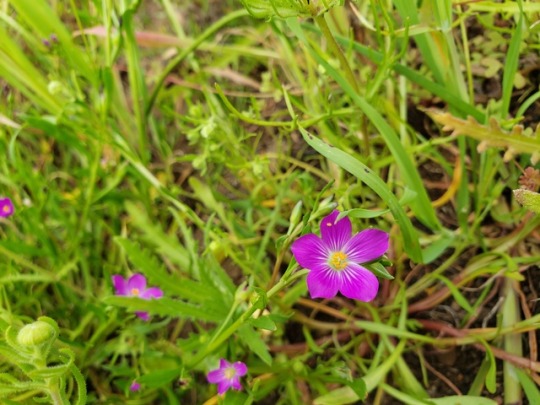
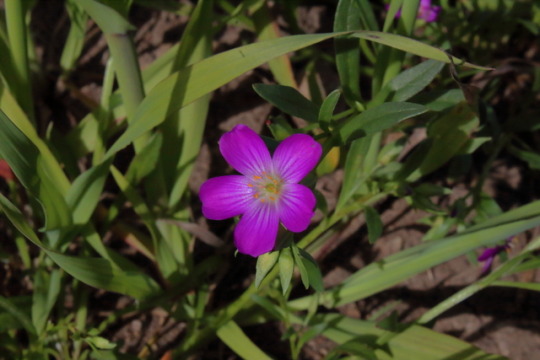
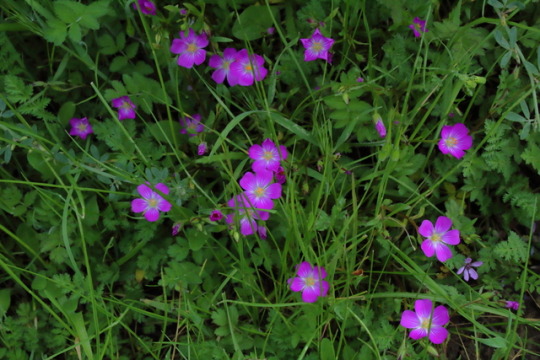
Let's take a look at some Red Maids (Calandrínia ciliàta).
Found in the Purslane Family (Portulacaceae) these small succulent herbaceous annuals are low to the ground and bloom from February through June. They are most cheery to see. Often times on morning walks they go unnoticed until the warm sun causes them to open and all of a sudden you look down with your path dotted in exquisite magenta delicate little flowers.
Fun fact: The scientific namesake is after the Mathematician and professor of Philosophy, Jean Louis Calandrini (1703-1758), who authored works on botany in Geneva, Switzerland. Ciliata was referring to the slight fringing of the petals.
References:
Dale, N. (2000). Flowering plants of the Santa Monica Mountains: Coastal and chaparral regions of Southern California. Sacramento: California Native Plant Society.
McAuley, M., & Kenney, J. P. (1985). Wildflowers of the Santa Monica mountains. Canoga Park, CA: Canyon Pub.
10 notes
·
View notes
Text


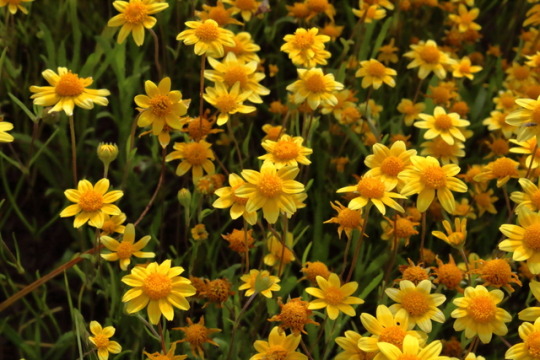
Let's take a look at some Coast Goldenfields (Lasthènia chrysótoma).
Found in the Sunflower Family (Asteraceae) this common annual herb can be found in grassy openings in Chaparral and Coastal Sage Scrub, blooming from March through May.
Fun facts: If you've picked one flower you are actually holding an entire bouquet since each flower is made of many tiny flowers gathered on a common receptacle. Apart of the largest family consisting of 129 species in the Santa Monica Mountains, L. chrysótoma is in the Helenieae tribe. The Jack of Spades always held one of these flowers in his hand on early Spanish California playing cards. The Señoritas called it "si me quieres, no me quieres," meaning "love me, love me not;" a game more familiar among young ladies with daisies.
Ancient Facts: The name Lasthènia remembers the Greek woman who dressed as a man so she could attend the lectures of Plato. Chrysótoma means "goldenmouthed."
References:
Dale, N. (2000). Flowering plants of the Santa Monica Mountains: Coastal and chaparral regions of Southern California. Sacramento: California Native Plant Society.
McAuley, M., & Kenney, J. P. (1985). Wildflowers of the Santa Monica mountains. Canoga Park, CA: Canyon Pub.
13 notes
·
View notes
Text
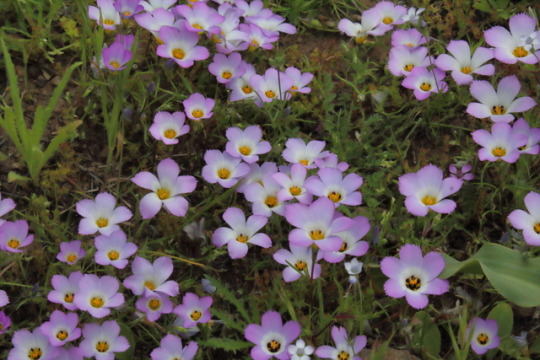



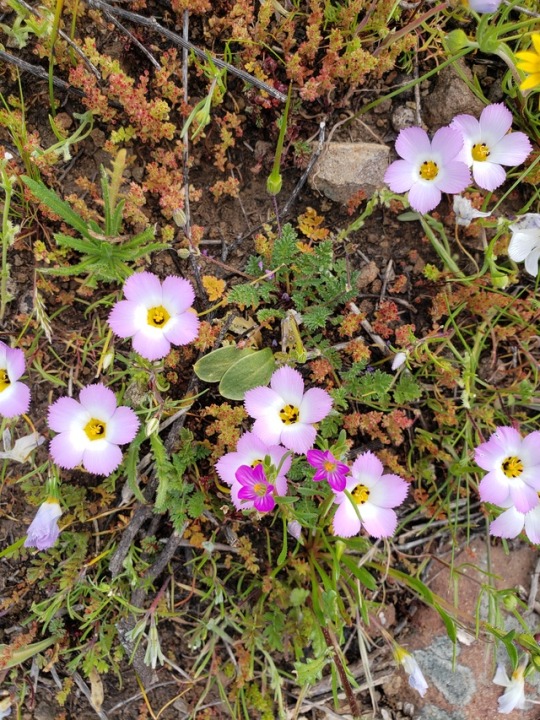
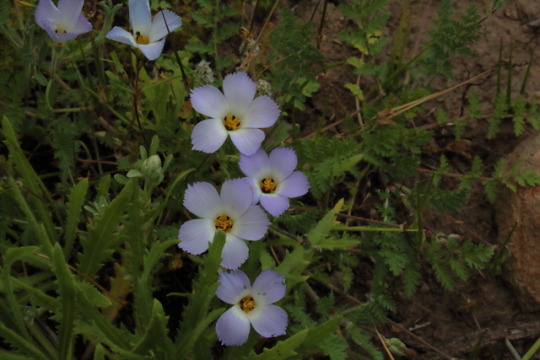
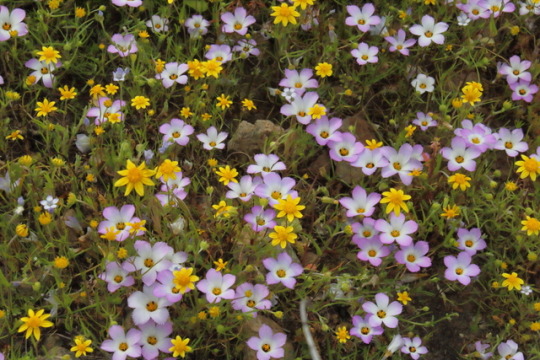
Let's take a look at some Ground Pink (Linánthus dianthiflòrus).
Found in the Phlox Family (Polemoniaceae) this annual herb has more native species in California than anywhere else. It blooms from February through April and can be pink, lilac, or white.
Fun fact: This showy annual is found abroad in rock gardens and used along edgings under the generic name Fenzlia dianthiflora. The generic name in Greek means "flax flower" and dianthiflorus means "resembling carnations."
References:
Dale, N. (2000). Flowering plants of the Santa Monica Mountains: Coastal and chaparral regions of Southern California. Sacramento: California Native Plant Society.
McAuley, M., & Kenney, J. P. (1985). Wildflowers of the Santa Monica mountains. Canoga Park, CA: Canyon Pub.
21 notes
·
View notes
Text
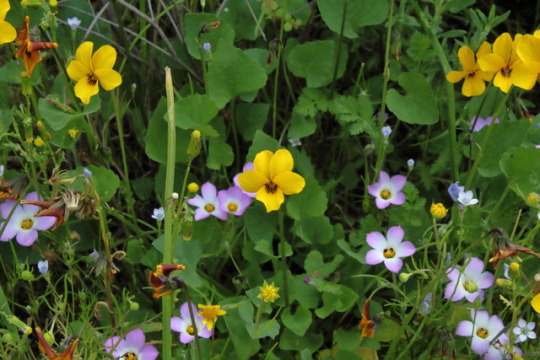
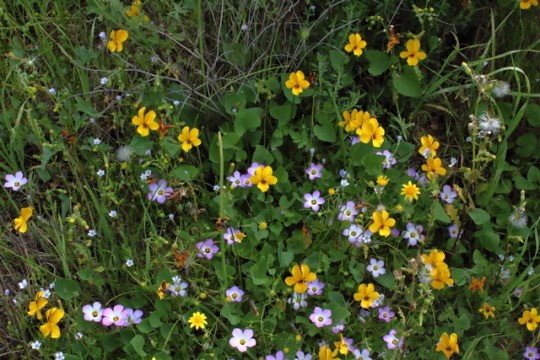
Let's take a look at some Johnny-jump-up (Viòla pedunculàta).
Found in the Violet Family (Violaceae) these bright yellow perennial herbs are the Santa Monica Mountains' only species. The lower petal serves as a landing platform for insects and they typically bloom from February through April on shady grassy slopes.
Fun facts: Early Californians called them Gallitos, "little roosters." The flower is zygomorphic, Greek for "yoke-shaped." Finally, the Silverspot Butterfly's larvae feed on these.
References:
Dale, N. (2000). Flowering plants of the Santa Monica Mountains: Coastal and chaparral regions of Southern California. Sacramento: California Native Plant Society.
McAuley, M., & Kenney, J. P. (1985). Wildflowers of the Santa Monica mountains. Canoga Park, CA: Canyon Pub.
6 notes
·
View notes
Text


Let's take a look at some Stinging Lupine (Lupìnus hirsutíssimus).
Found in the Pea Family (Fabaceae) these herbaceous annuals actually do sting. Not like a cactus. It's hairs are sharp and easily burrow into flesh causing lasting pain or irritating itching. Admire the robust color from a distance; the entire plant is covered in nettle-like hairs. This is a dominant fire follower and blooms in March through May.
Fun fact: Some Native Americans are said to have boiled and eaten the young leaves. Be advised, do not eat this, there are claims that this herb has a poisonous effect when ingested.
Hirsutissimus means "very hairy."
References:
Dale, N. (2000). Flowering plants of the Santa Monica Mountains: Coastal and chaparral regions of Southern California. Sacramento: California Native Plant Society.
McAuley, M., & Kenney, J. P. (1985). Wildflowers of the Santa Monica mountains. Canoga Park, CA: Canyon Pub.
22 notes
·
View notes
Text
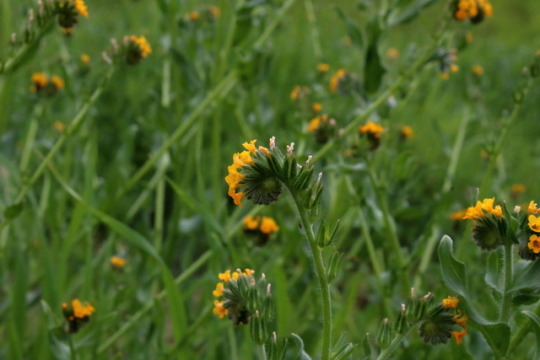
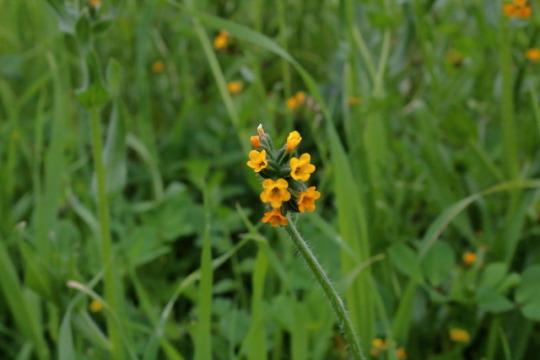
Let's take a look at some Common Fiddleneck (Amsínkia intermèdia).
Found in the Borage Family (Boraginaceae) this herbaceous annual native pops up each spring in recent burn areas or open grassy hillsides, blooming from February through May. When the husks dry out you often find sparrows perched on the stalk consuming their seeds where the bright flowers once were. As the Fiddleneck grow their tightly coiled racemes unbend with age.
Fun facts: Cows like to eat these despite being bristly to the touch. 🐄 In Arizona, they are known as Sacate Gordo, Spanish for "fat grass." This specimen is named after the 19th century patron of a botanic garden in Hamburg, Wilhelm Amsinck (1752-1831).
References:
Dale, N. (2000). Flowering plants of the Santa Monica Mountains: Coastal and chaparral regions of Southern California. Sacramento: California Native Plant Society.
McAuley, M., & Kenney, J. P. (1985). Wildflowers of the Santa Monica mountains. Canoga Park, CA: Canyon Pub.
12 notes
·
View notes
Text



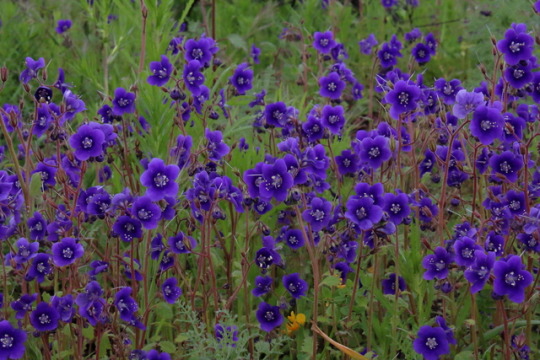
Let's take a look at some Parry's Phacelia (Phacèlia párryi).
Found in the Waterleaf Family (Hydrophyllaceae) this native annual is a fire follower and blooms March through May. It is no wonder then the entire hillside burn scar was densely populated with P. párryi in a southeastern exposure. I kept saying this is the most I had ever seen.
Fun fact: This plant is one of several species named after American botanist Dr. C. C. Parry (1823-1890).
Note the mutation! This is my first observed P. párryi with a completely albino flower. Very exciting! There were a total of 4 blooming at the base of the herb. I also find the 2 lighter colored P. párryi peculiar, but am holding off on declaring a mutation, although not ruling it out.
References:
Dale, N. (2000). Flowering plants of the Santa Monica Mountains: Coastal and chaparral regions of Southern California. Sacramento: California Native Plant Society.
McAuley, M., & Kenney, J. P. (1985). Wildflowers of the Santa Monica mountains. Canoga Park, CA: Canyon Pub.
15 notes
·
View notes
Text

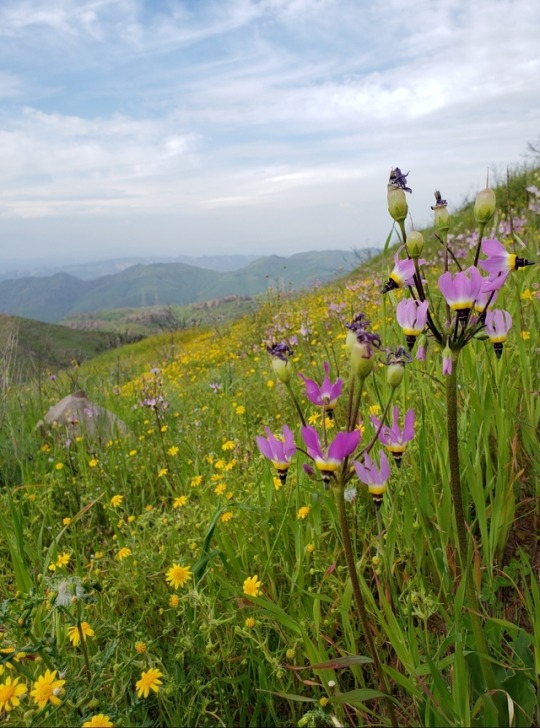
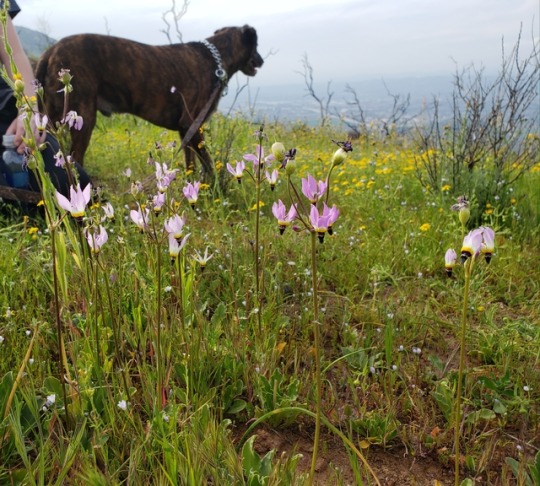

Let's take a look at some Padres' Shooting Star (Dodecátheon clevelándii).
Found in the Primrose Family (Primulaceae) & not to be confused with the Evening Primrose Family, this tall perennial herb blossoms early and is gone before most natives begin to burst with color, blooming January through early April.
Fun fact: It is the only true native member of Primulaceae in the Santa Monica Mountain range.
Dodecátheon is Latin for "twelve gods."
Note the mutation! This is my first time discovering a pure white specimen. Normally, Padres' Shooting Star's are vibrant magenta to light pink depending on the subspecies.
References:
Dale, N. (2000). Flowering plants of the Santa Monica Mountains: Coastal and chaparral regions of Southern California. Sacramento: California Native Plant Society.
McAuley, M., & Kenney, J. P. (1985). Wildflowers of the Santa Monica mountains. Canoga Park, CA: Canyon Pub.
7 notes
·
View notes
Text


Let's take a look at Wishbone Bush (Mirábilis laèvis).
Found in the Four O'Clock Family (Nyctaginaceae) these perenial herbs are pollinated at night, with blossoms opening mid-afternoon and closing early the following morning. The name Wishbone is derived from the way their woody stems grow.
Fun fact: This flower does not have petals. They are sepals and they are in the same family as Bougainvillea.
Note the mutation! This is my first observed mutation of this plant. Note the magenta interior star shape on the sepals. Extraordinary. Normally, this low-lying, cheerful herbaceous plant is exclusively magenta with a typical bloom cycle from March through May.
Mirábilis is Latin for miraculous.
References:
Dale, N. (2000). Flowering plants of the Santa Monica Mountains: Coastal and chaparral regions of Southern California. Sacramento: California Native Plant Society.
McAuley, M., & Kenney, J. P. (1985). Wildflowers of the Santa Monica mountains. Canoga Park, CA: Canyon Pub.
5 notes
·
View notes
Text
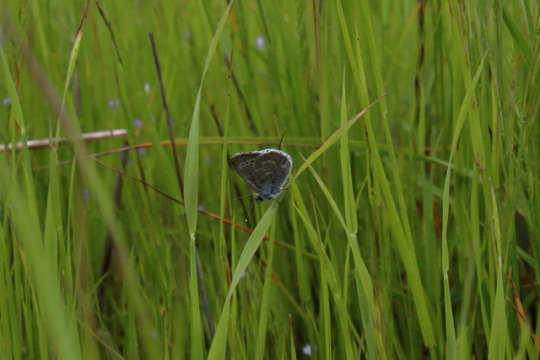

This is a real treat to photograph. They are so skiddish. I am still waiting to capture one with it's wings open and the sun glistening off it's iridescent blue wings before scaring it deep into the scrub brush. I believe this is a Silvery Blue (Glaucopsyche lygdamus) based on it's wing pattern, but I am not an entomologist. If so, it is critically endangered due to habitat loss. It would make sense for it to be in this area because one of it's host plants are Lupine and they grow in abundance here.
References:
Silvery Blue Glaucopsyche lygdamus (Doubleday, 1841). (2019, March 21). Retrieved from https://www.butterfliesandmoths.org/species/Glaucopsyche-lygdamus
6 notes
·
View notes
Text

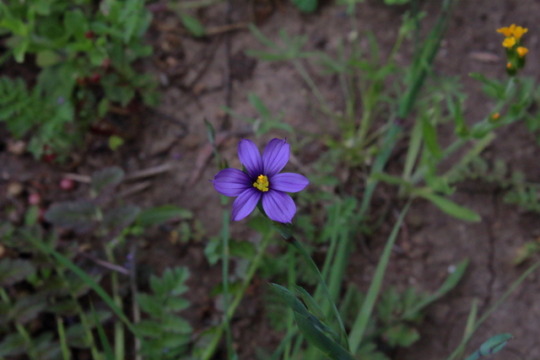
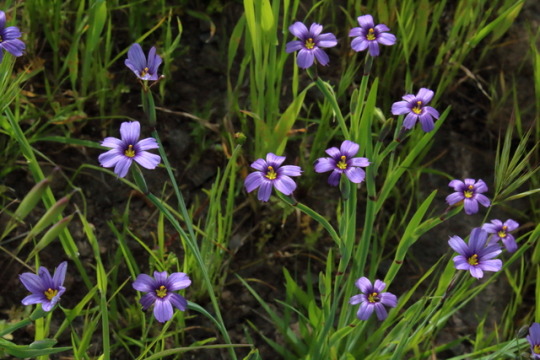
Let's take a look at some Blue-Eyed Grass (Sisyrínchium béllum).
Found in the Iris Family (Iridaceae) these common perennial herbs are native to our mountains and bloom typically from March through May in grassy meadows and other open spaces.
Fun fact: Spanish Californians used the roots to make tea for the specific purpose to ward off fevers and called S. béllum "azulea."
Ancient fact: Sisyrínchium was a plant the Greek student Theophrastus (372-287 B.C.) described relating to the Iris. His written works on flora were relied on extensively by Renaissance writers. He was Aristotle's successor.
References:
Dale, N. (2000). Flowering plants of the Santa Monica Mountains: Coastal and chaparral regions of Southern California. Sacramento: California Native Plant Society.
McAuley, M., & Kenney, J. P. (1985). Wildflowers of the Santa Monica mountains. Canoga Park, CA: Canyon Pub.
16 notes
·
View notes
Text
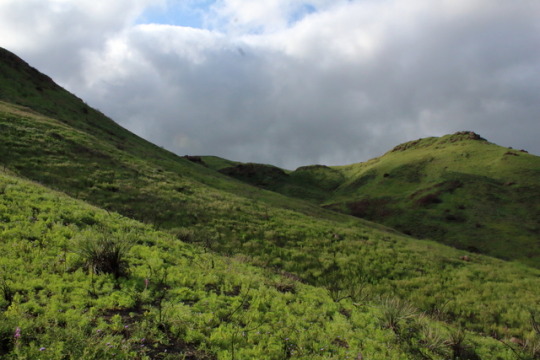
This is one burn scar from the 2018 wildfires, as noted by some charred remains of various shrubbery in the photo. It's truly amazing how much regrowth propagated in just 4 months due to our wet winter! This rebirth was spurred on by nitrates injected into the soil from the fire. All the invasive grasses, weeds, and native chaparral overgrowth were destroyed, which removed the competition for nutrients, water, and light, allowing for smaller natives to pop up in abundance. The flora in this coastal Mediterranean climate evolved adaptations consistent with surviving an occasional fire that cleanses this habitat from overgrowth. Even in some plant species, seeds will wait to germinate until after a fire, hence the term "fire follower." This unique area experiences seasonal sustained Santa Ana gusts of 50+ mph for weeks at a time. My goal is to display all the beauty up close that one may find after the horror experienced from an ember carried on the wind in wildfire season. Furthermore, to bring appreciation for an area that many, may not understand due to the proliferation of media-hype and the general spread of misinformation across various platforms. I won't be exactly disclosing each trail I photograph for nature preservation purposes, but the majority of my photos consist mainly of various parts of the vast expanse in the Santa Monica Mountain range, where I call home. I hope with each flower, leaf, or lichen I share, you will be as enamored as I am and it incites a desire in you to conserve our world for future generations. Enjoy!
18 notes
·
View notes